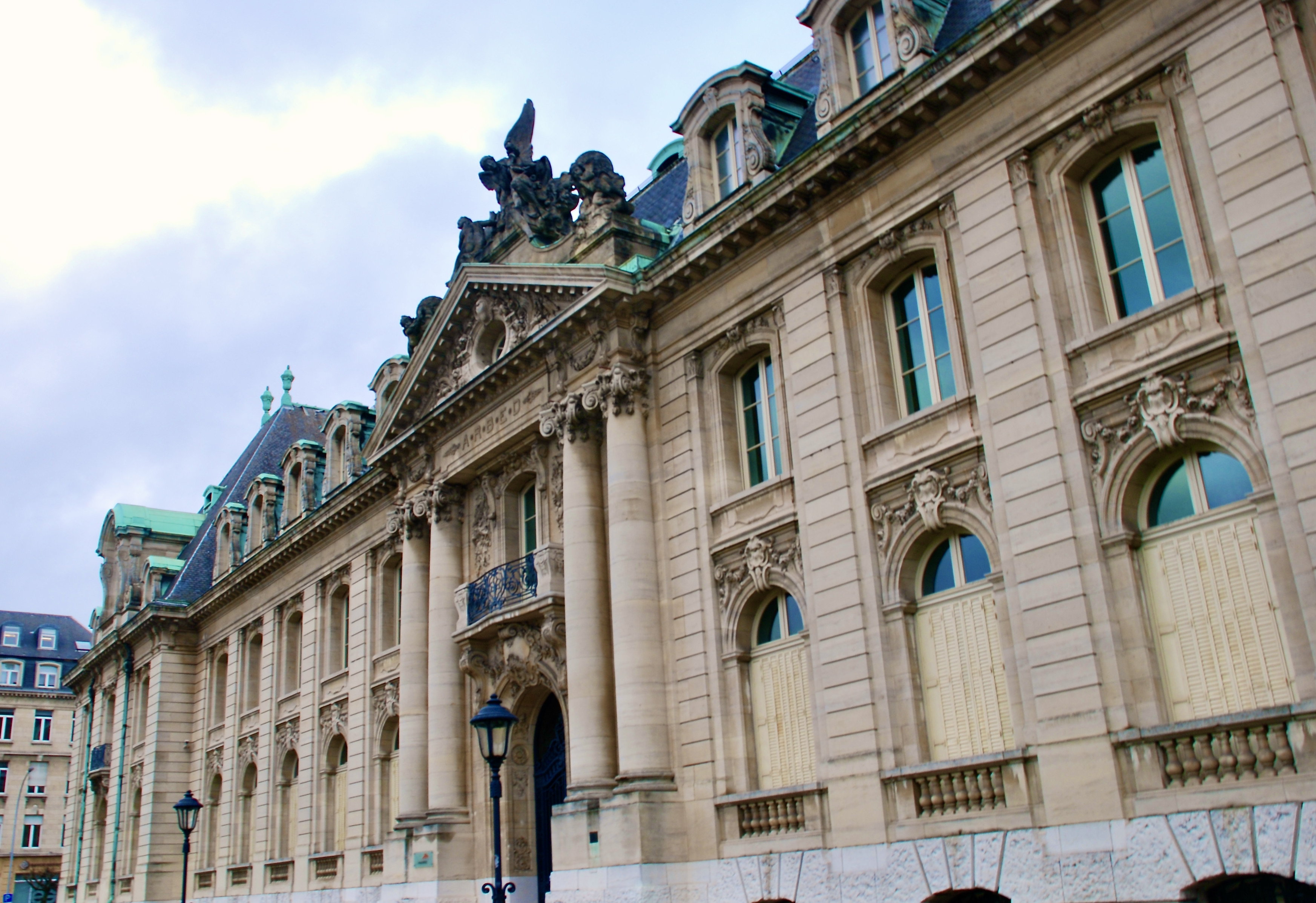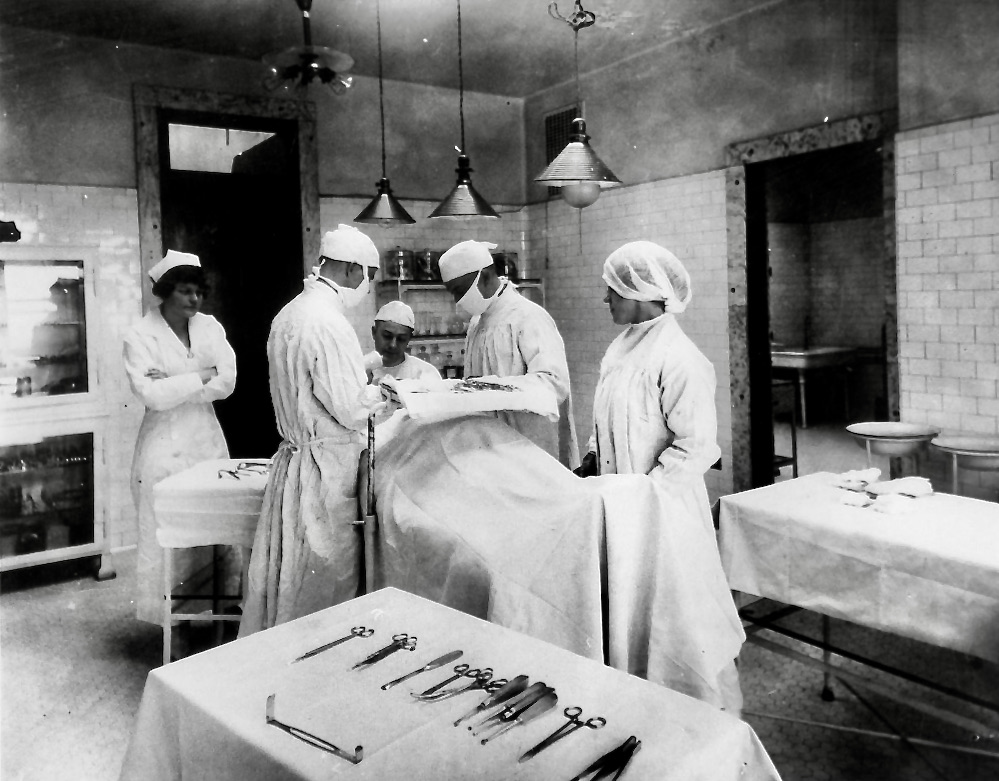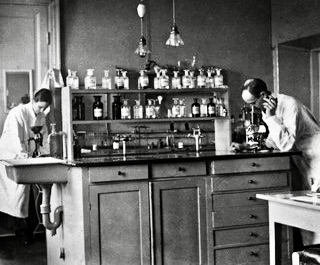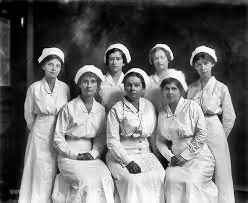St Luke's Hospital & Sanatorium
Renowned as one of the most prestigious medical institutions in South Wales and beyond, St Luke’s Hospital & Sanatorium is the largest medical facility in the town of Harthill, and is the place that most of the town’s residents will go if they need surgical or specialist treatment that their local physician cannot provide.
Governance
St Luke’s Hospital & Sanatorium is a charitable body, created through donations from wealthy families residing in eighteenth century Harthill, who, not wanting to see their money be frittered away or go to causes beyond their original purpose, insisted that the hospital be governed by a Board of Trustees, who would have direct oversight of the finances and strategic activities of the institution. Each of the 20 members of the Board of Trustees hold the position for life, or until they choose to step down and they are elected by the existing members of the Board. The Board also elects its own chairperson from amongst the existing Board Members. Initially, the Board of Trustees was made up of representatives of the 20 families who contributed the most money to the foundation of the hospital, but when those inaugural Trustees began to step down, or die in post, it was agreed that any one ‘of upstanding and noble character’ could put themselves forward for election to the Board. Naturally, the vagueness of the criteria and the election process itself has led to numerous allegations of cronyism and nepotism being levelled at the board, but none of these accusations have ever been acknowledged, let alone investigated. Today, representatives from the most affluent and influential families can be found on the Board of Trustees, including the McIntyre, Buchanan, Cheverton families, and rather notoriously, even the Halem Family. Moving down a step, the actual medical practices of St Luke’s are presided over by three qualified medical practitioners who are appointed by the Board of Trustees; the Head of Surgery, the Head of Medicine and the Head of the Sanatorium, along with one business professional, who is appointed by the Board to the position of Executive Director, to oversee the non-medical operation of St Luke’s.Purpose / Function
As St Luke’s was founded as a charitable institution, dedicated to look after the health and wellbeing of all of the citizens of Harthill, regardless of their wealth or social station, it provides free healthcare to all in the town who are unwell.
However, the altruistic founding principle of St Luke’s does not mean that it is free from the subversion of its aims. It is expensive to run a charitable institution as St Luke’s at the best of times, but when this is combined with the myriad pieces of expensive equipment and medical supplies needed to keep the hospital running smoothly, it was realised long ago, that the hospital would not survive without income additional to the charitable endowment provided at its foundation, and the trickle of other incoming donations.
As a result, St Luke’s also operates a substantial private practice, where citizens of Harthill with the means to pay for it can be treated ahead of others and often to a higher standard. Whilst many of the Trustees that sit on the Hospital’s board may find this practice repulsive, it is accepted as a necessary evil to ensure the survival of the town’s premier medical establishment.
Entries
St Luke’s has four entrances, one for each of its component quadrants, set in the north, south, east and west of the complex. As the Hospital is set in the middle of Saviour’s Square, all of the entrances have a Saviour’s Square address.
Alterations
As to be expected of a medical institution that has been in existence for hundreds of years, St Luke’s has undergone numerous alterations since it opened its doors in 1713. These renovations have encompassed all manner of things, from the installation of electric lighting, to the creation of laboratory space, specialist areas for the treatment and care of children and those with psychological ailments etc. Most recently, the operating theatres in the north wing have been completely revamped and kitted out with the most up-to-date equipment and sterilised environment possible, making St Luke’s the envy of other hospitals in the region, and a rival for even some of the prestigious medical facilities in London.
One of St Luke's Operating Theatres
Architecture
St Luke’s Hospital & Sanatorium is a grand Georgian style building, that is constructed in the form of a large quadrangle, whose centre is a picturesque expanse of landscaped garden, for the enjoyment of the staff and the patients, and to provide a space for those under St Luke’s care to get access to fresh air and a space to conduct gentle exercise.
St Luke’s is split into four distinct areas, known as quarters:
North-West Quarter:
This section houses the surgical and more specialist medical departments of the hospital, as well as the hospital’s laboratories.
North-East Quarter:
This section houses the majority of the hospital’s wards.
South-West Quarter:
This section is reserved for use as the St Luke’s Sanatorium, and access from the rest of the hospital is highly restricted, to help maintain the integrity of the secure wards that have been set up within the quarter.
South-East Quarter:
The South-East Quarter has been set aside for the use of Teliávus University's School of Anatomy & Medicine – see below.
All four of the hospital’s quarters are three stories in height, not including the loft spaces, most of which have been turned into offices, maintenance areas and staff break-rooms and sleeping quarters. Two of the hospitals quarters, the North-West and the South-West have basement levels, which contain the morgue and pathology departments in the north and what are referred to simply as ‘Maximum Security Wards, or MSWs in the south.
Researchers in the St Luke's Laboratories
Auxiliary Buildings
As well as the main St Luke’s site, a number of the other buildings around Saviour Square have been bought and converted for the use of the hospital, that act variously as offices, additional examination room space, for patients with mild ailments and a large garage, where the hospital’s fleet of ambulances are stored, maintained and repaired as necessary.Links to Teliávus University
Whilst St Luke’s is a completely separate entity to Teliávus University, it does maintain links with it as it hosts the School of Anatomy & Medicine on its site and has set aside the South-West Quarter of its main building to provide rooms for the academic staff and teaching spaces for the students educated there. As well as providing the educational space, it has long been the tradition that students of the School of Anatomy and Medicine begin working in the hospital as soon as they are deemed to be competent enough, initially only observing ‘live’ procedures then acting under strict supervision and eventually being given their own allocation of cases, where they are allowed to operate with nearly the level of autonomy of qualified nurses and doctors.Key Staff
Chair of the Board of Trustees - Sir Victor Aslett Trustees - Mr Oliver McIntyre / Dr Abraham Mildenhall / Mr Dudley Halam / Ms Lavender Davey / Mrs Philis Sandow / Mr Malcolm Leal / Mrs Maude Argall / Ms Iva Reseigh / Ms Clarence Hickling / Mr Josiah Prior / Mrs Alice Daykin / Mrs Madeline Harding / Mr Stewart Buchanan / Mr Arthur Magnus / Sir Theodore Odgers / Lady Eva Pinkerton / Mrs Emmeline Cheverton / Mr Nathaniel Rowe / Mr Henry Durling Executive Director - Mr Basil Rowe Head of Surgery - Dr Percival Williams Head of Medicine - Dr Lewis Camburn Head of the Sanatorium - Dr Merlin Ellingham Matron - Mrs Jeanie ChadbournePart of the St Luke's Nurses Staff







Comments